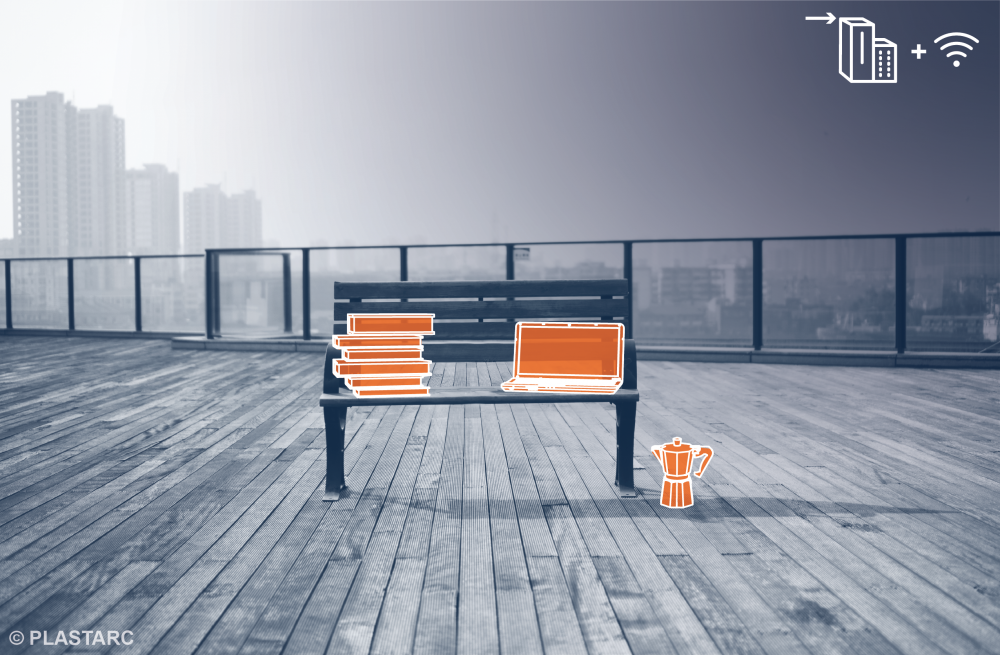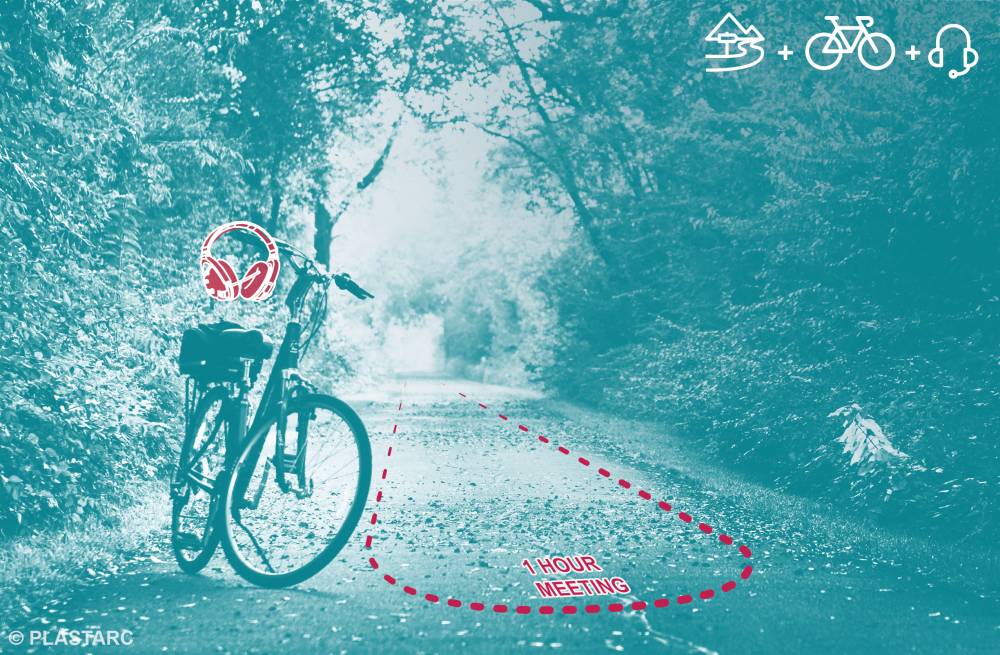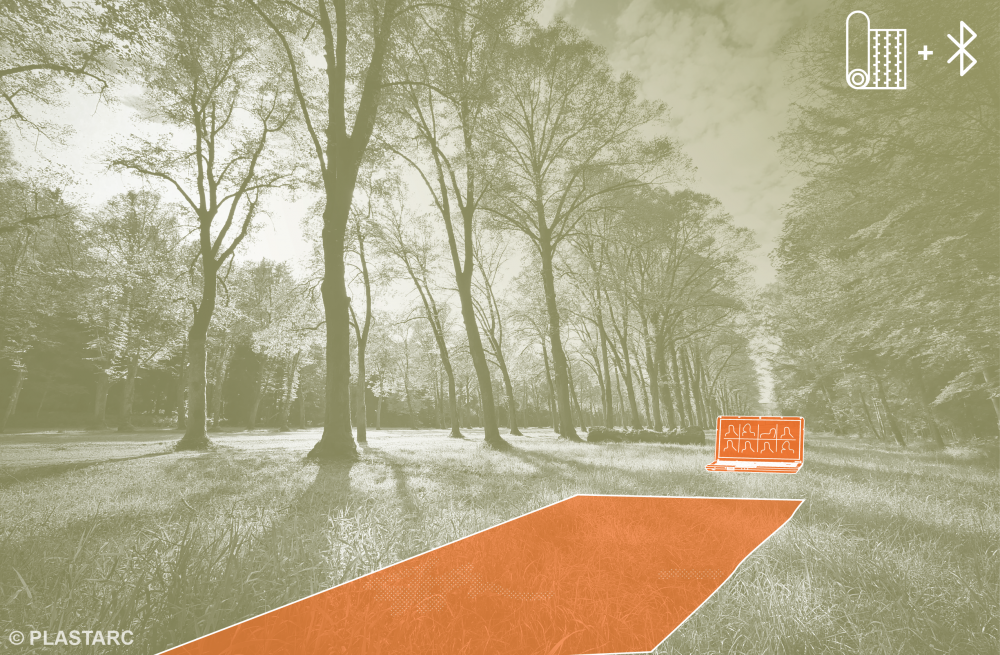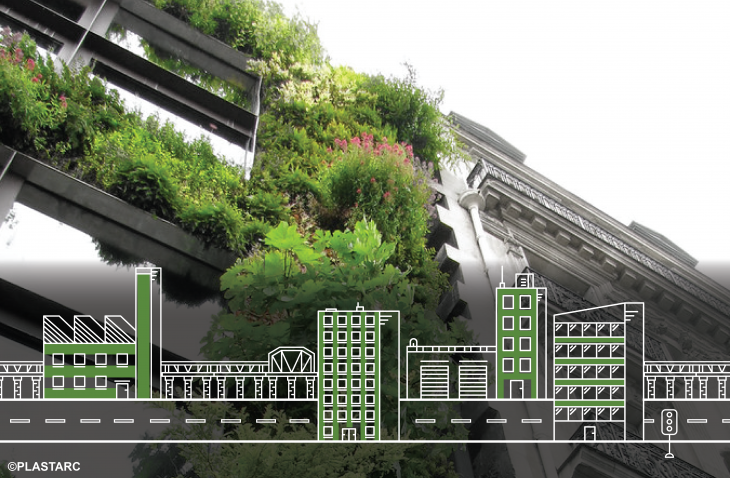PLASTARC’s Founder and Executive Director, Melissa Marsh, refreshes what it means to be working outside the office.
No matter how comfortable and packed with amenities today’s workplaces may be, there’s still something special about being outside. Daylight, fresh air, frequent exercise, and inspiring scenery can give a significant boost to office workers who might otherwise be stuck at a desk for most of the day, whether they’re working from home or coming into the office. Taking breaks outside and self-care routines are a great start, but we can also take things a step further by finding ways to work outdoors, outlandish as it may sound (pun intended).
A few years ago, we wrote about evolving trends in outdoor design. Now, we find ourselves gradually progressing towards an office that actually has some of its workspace outdoors. It’s a logical continuation of a work culture that has emphasized a greater sense of personal control over workplace surroundings, both at home offices and ABW-inspired workspaces. Instead of spending five days a week confined to a solitary cubicle, office workers now have the freedom to contribute from home or commute to the office, where they can spontaneously switch between spaces that are individually tailored for work styles or types of tasks. With a higher diversity of sensory experiences available in the office, workers are achieving more active, healthier work routines.

But even with these new working routines, people are still spending more than 90% of their time inside: in their workplaces, vehicles, homes, or elsewhere. This is at odds with most of human evolutionary history. It’s a disconnect so profound that “nature deficit disorder” and “psychoterratica” have entered the lexicon to describe it. To combat this self-imposed exile from the natural world—and the attendant stress and health effects—designers have turned to practices such as biophilic design, which incorporates elements of nature into the built environment. By increasing exposure to daylight, plant life, water, and a variety of landscapes, this approach is clearly benefiting both human health and workplace performance.
And while it’s great to optimize everyone’s multisensory experience indoors, who’s to say we have to stop there? Bringing natural stimuli into the office is a great start, but some organizations are taking things a step further by bringing their office outside. The real purpose of the workplace—to support collaborative work—is actually served better this way.
We’ve been talking recently about how “on-site” is the new “off-site,” how offices are now “destinations” and that, when we go to our offices, it should be for a particular reason or a type of work that is location-specific. This is simply an extension of that concept. Some types of work are best suited for a conference room. Some are best suited for your kitchen table, and some are best suited for a group stroll through the forest.

Outdoor Inspiration
The trendy practice of forest bathing offers perspective. Despite the name, it has little to do with a bathroom (though we’re fully in favor of more innovative restroom designs!) Rather, it refers to purposeful and mindful immersion in nature. Originally popular in Japan, it has been shown to benefit both physical and mental health and to decrease levels of hostility and depression. An interesting finding from this research is that people are positively impacted by being outdoors even if they do not enjoy it! It’s not just that going for a walk is pleasurable; people see benefits from being outside even in conditions that are not comfortable, such as very cold or hot temperatures.
Bringing these positive benefits to more people is part of what’s driving a movement to return the outdoors—not as a temporary relief from the indoor office, but as the default. Outdoor work environments have become increasingly common in recent years, particularly in the less urban parts of San Jose and San Francisco. And the trend is not limited to just the Bay Area or even just to traditional offices; L.L. Bean and Industrious recently showed off their outdoor coworking prototype (pun-ily named “BeAn Outsider at Work”) in Manhattan’s Madison Square Park.
Outside is the Default
A few years ago, members of our team were providing workplace strategy to the National Park Service at Grand Teton. As one of the jewels of the national park system, Grand Teton does not want for gorgeous, majestic vistas. As inspiring as their environs, however, were the workplace habits of the team.
For example, the default venue in which park staff conducted a one-to-one meeting was a walk together outside. This is a great place for almost any company to start. It requires almost zero investment in infrastructure and is immediately beneficial; being immersed in nature for even 20 minutes can measurably improve wellbeing.

The outdoor-first frame of mind extends to other circumstances as well. Larger meetings at Grand Teton might happen at covered picnic tables. Many state and national parks are equipped with outdoor amphitheaters that are often used for both public programs and staff functions. This may actually make these programs more effective, as going outside improves memory and attention.
While not every workplace is surrounded by such a picturesque landscape, most could do more to enable a seamless experience of working outside. People continue to sit at desks inside because they think it’s how work is supposed to look and feel – it is, after all, how office work has looked up until now. But the WFH revolution has thrown many of our preconceived notions about work out the window; we’re now more than comfortable with the fact that our work can happen anywhere. Why, then, limit ourselves to indoor spaces?
Getting Outside Right
In order to make outdoor work effective and sustainable, there are some complexities that need to be tackled. Like any design challenge, these relate both to the physical aspects of a great workplace and the organizational change required to enable people to perform well.
There are a few areas in which nature can sometimes deliver a bit too much of a good thing. Daylight is one of them. It is generally considered to be a good thing in architecture, but daylight on a computer screen is less so. Unless you’re keen to buy one of these classic garments (or sew your own!), you’ll need a laptop with a transflective screen. In a pinch, polarized sunglasses may also work.
Acoustics are also an important consideration. Wind can be a major distraction over the phone—far more than it would be in person. Designating parts of the outdoor environment that are relatively sheltered from the wind as outdoor “phone booths” can help.
As for work surfaces, many furniture companies now offer outdoor lines, including Crate and Barrel and Design Within Reach (DWR). These options often channel resimercial design, which marries the comfort and versatility of simple home furnishings with the needs of a commercial office environment.

Progress in Business Practice
If outdoor spaces are to be used regularly, behavior, culture and policy must continue to shift. We’ve already shattered the notion that people need a tightly controlled environment in which to work. It’s entirely ordinary to see coworkers exist in non-office spaces like kitchens, bedrooms, gardens and porches. Similarly, organizations are moving away from workplace touchstones like marble lobbies, business suits, and corner offices, as we collectively question whether antiquated fixtures of business culture actually add value. And in their place, self-care routines, including better hydration, deeper sleep, and healthier diets, are entering into the vocabulary of workplace cultures.
None of these self-care routines, though, may be as important as regular exposure to the outdoors. One of its key benefits, unexpected sensory stimulation, can’t really be found anywhere else. Even the most biophilic spaces can feel a bit confining, as workers are exposed to a limited (albeit more diverse) array of sensory experiences day-after-day. Meanwhile, the great outdoors is full of ever-changing, unpredictable stimuli. The evolving workplace strives to incorporate surprise and delight into design – unsurprisingly, outdoor offices offer a paragon for both.
Educators get this, which is why there’s been a push for more outdoor learning—including the development of forest schools—for several years. Children who attend forest schools are statistically more active and less likely to catch colds and viruses. Being outdoors reduces cortisol levels and muscle tension, while improving cardiovascular functioning.
As workplace psychologists for the future lululemon HQ, which is currently being built in Vancouver, we have seen that both employees and employers are taking outdoor access seriously. Even in a relatively urban environment, the design team for the lululemon project plans to include a large outdoor terrace and as much integration of indoor and outdoor space as possible.
Working outside is finally having its heyday, and we’re glad to see it. There will continue to be some jobs that require access to the indoors, but this is the perfect time for each organization to question those assumptions. Even contemplating such a shift is sure to lead to productive conversations about what people need from their spaces and how best to deliver the environments they need to perform.
Want to read Melissa’s insights foundation insights on the topic?
Shifting Needs for Outdoor Design



